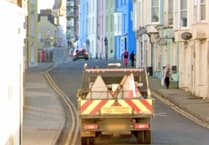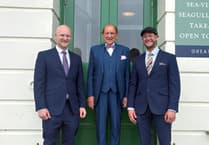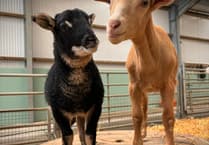A study funded by the Wellcome Trust and aimed at developing a genetic map of Britain has begun to shed light on how the ancient populations of Britain - the Celts, Anglo Saxons and Vikings - moved into and across the country. Initial findings, presented in the Channel 4 series Face of Britain, support the notion that the Viking invasion of England was predominantly from Danish Vikings, whilst Orkney was invaded by Norse Vikings. Volunteers from across the UK have been donating samples of their blood to help scientists at the University of Oxford study genetic differences, known as genetic variation. Some of this variation contributes to inherited differences in susceptibility to many common diseases, such as cancer and heart disease. Working with researchers across the country, Professor Walter Bodmer and colleagues have already collected some 1,900 samples from volunteers and are looking to double that figure. In particular, they are interested in collecting blood samples from volunteers living in rural areas whose grandparents on both sides were born in the same location, within a radius of approximately 30 miles. To achieve their goal, they plan to collect blood samples from people throughout the UK. The west of Wales is particularly important because the evidence so far suggests that the Welsh, and Celts in general, are linked genetically to the Ancient Britons who inhabited Britain before the Romans arrived. "Our aim is to characterise the genetic make-up of the British population and relate this to the historical and archaeological evidence," says Professor Bodmer. "We are collecting samples from people in rural areas with all four grandparents born the same area so as to avoid the recent mixing up of populations in urban areas and to reach back in time as far as possible. "Our samples will provide a valuable control for studies on disease susceptibility which depend on comparing the frequency of genetic markers in disease groups with that in control groups. If we are able to eliminate genetic markers linked to geography rather than disease, then we should be able to minimise the risk of finding spurious associations." The researchers have already carried out some analysis of the samples they have already collected and presented their initial results on Face of Britain. For example, the researchers have found that two rare versions of the gene MC1R occur with a much higher frequency in areas where the Celts were settled than where the Anglo Saxons settled. 'People of the British Isles' is currently seeking people aged over 18-years-old to donate their DNA by giving a small sample of their blood. All of a volunteers grandparents should have been born in the same rural area with a 30-40 mile radius. All they will need is about 60 minutes of a volunteer's time, to fill in a brief questionnaire, and about 20ml (about a tablespoon) of blood. Samples have to be anonymised, which means that individual results won't be given out but general results of the study will be reported in a newsletter as they arise. They will be at the Catholic Church Hall, North Road, Cardigan, on June 25 from 1 until 6 pm. People wishing to find out more about the project or to take part in the study can contact Tammy Day on 01865 863819 or e-mail: [email protected]">[email protected]. Visit http://www.peopleofthebritishisles.org">www.peopleofthebritishisles.org for more information.



